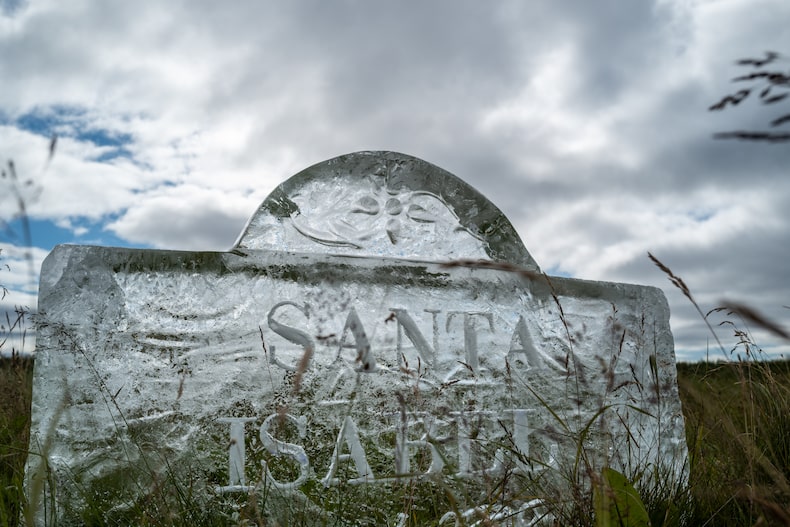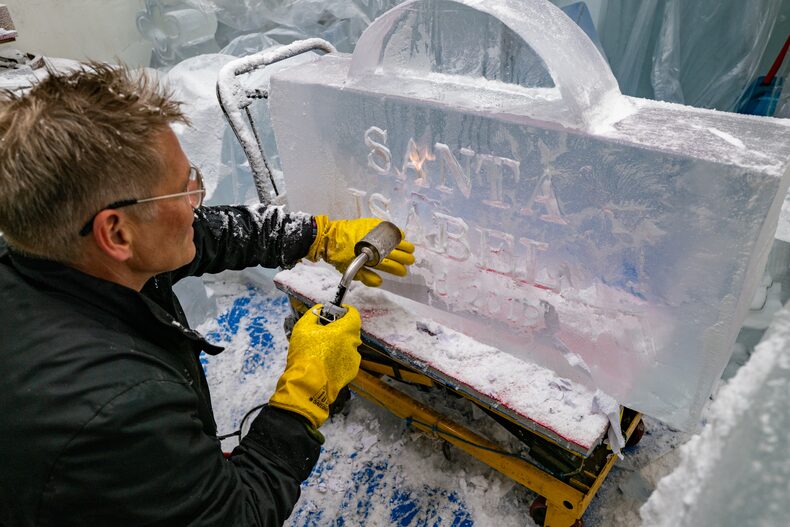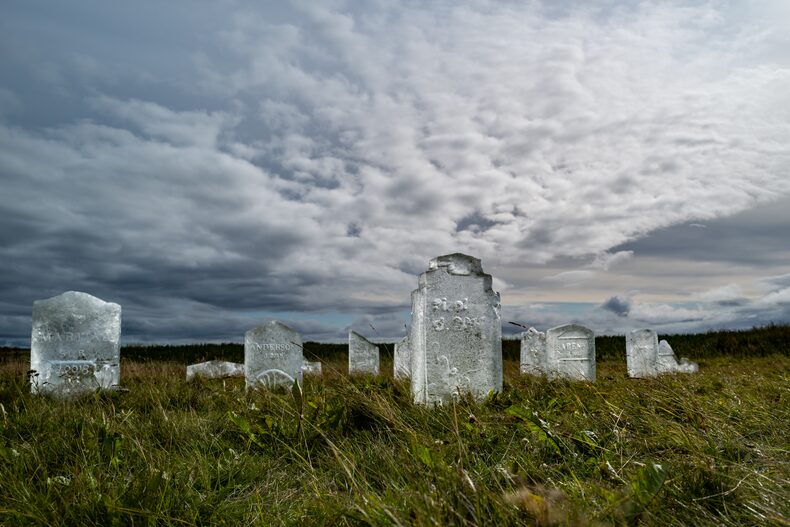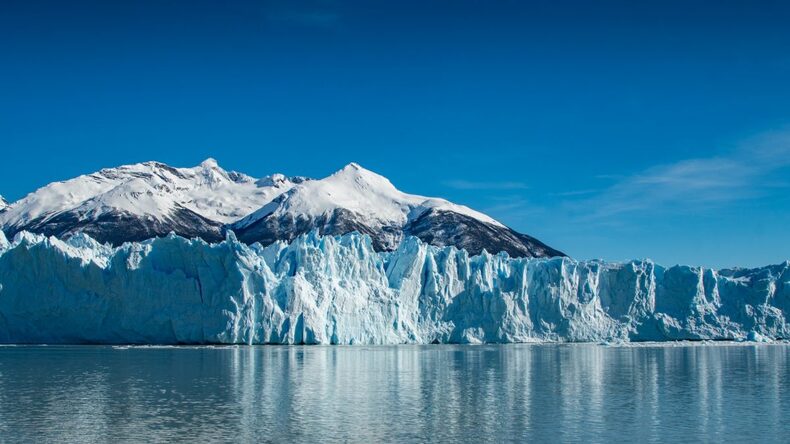15 tombstones made of ice stand in a field in Iceland, a reminder of all the glaciers that have died or are likely to die. And the effects of climate change are becoming more pronounced around the world every day.
In the middle of a small hill in Iceland are 15 tombs made of ice. In the inscriptions we read names such as Kilimanjaro, Pizol, Baumann, among others. But Tombstones are not meant to remember people, but glacier extinct.
A few weeks ago, a funeral ceremony took place where The first glacial cemetery has been opened in the Icelandic capital, Reykjavik.
Dozens of scientists, authorities and researchers gathered that day to commemorate the country’s glaciers, which are melting so rapidly that future generations will likely only be able to see them in photographs, as they will have turned to water by then.
With this intervention, experts called for consideration of the intense consequences that are already occurring in the world as a result of uncontrolled climate change.
And, according to the United Nations (UN) , “Global warming has caused the disappearance of thousands of glaciers worldwide since 2000 and at least half of these glaciers are expected to disappear by 2100.”

What the Glacier Graveyard in Iceland Looks Like
Researchers of the Rice University in Houston, the Icelandic Meteorological Office geologists, glaciologists, government leaders, UNESCO the UN and the World Meteorological Organization They attended this funeral ceremony where the world’s first glacial cemetery was inaugurated.
This cemetery – located in a field, by the sea on the Seltjarnarnes peninsula – It consists of 15 symbolic tombstones carved into the ice by Icelandic sculptor Ottó Magnússon. Each of them is inscribed with the name of a major glacier.

“We’ve never needed a glacier graveyard before” said Cymene Howe, a senior scholar at Rice University.
However, given the alarming situation the world is experiencing, the expert said that this cemetery is very necessary: “And while these headstones will melt, like their glacial counterparts, we hope the ceremony and the headstones will serve as poignant reminders that the world’s glaciers are doomed to the same fate if swift action is not taken.”
For example, the Snæfellsjökull glacier, one of the most famous in the world thanks to Jules Verne’s science fiction novel, Journey to the Center of the Earth– has lost more than half of its size since the end of the 19th century.

And although the situation of this emblematic glacier is worrying, There are other glaciers that have suffered worse effects, such as the Pizol in Switzerland, the Sarenne in France, the Anderson in the United States and the Martial Sur in Argentina, which have been classified as “extinct”.
At least in Iceland (a country that has already lost 70 of its 400 glaciers), every time a person dies, Authorities are trying to commemorate the death with a funeral ceremony to show the world that climate change is real and its consequences are devastating.
And all indications are that this catastrophic trend will continue upward. As Hrafnhildur Hannesdóttir, a glaciologist at the Icelandic Meteorological Service, explained to United Nations Regional Information Centre for Western Europe (UNRIC) , “There is no indication that CO2 emissions are decreasing.”

What will happen to the world if the glaciers continue to melt?
“If all the glaciers in Iceland disappeared, the meltwater would cause a one centimeter rise in sea level, almost as much as all the glaciers in the Himalayas.” said Icelandic glaciologist Thorsteinn Thorsteinsson in a conversation with UNRIC.
And that’s it The Himalayan glaciers are quite extensive: they occupy about 40,000 square kilometers of surface area.
To give you an idea, Vatnajökull, which is the largest glacier in Iceland and Europe, covers 7,700 square kilometers. Although in this particular glacier, scientists hope that it will survive for at least another three centuries.
Then there is the second largest glacier, Langjökull, which is more endangered than Vatnajökull. According to researchers, by 2100, only 10 to 20 percent of its total mass will remain.

Another consequence of the melting of the Himalayan glaciers is that those of the Hindu Kush-Himalaya region “feed some of the most important rivers on the planet, like the Indus, the Ganges, the Brahmaputra and the Yangtze,” they said from the UN.
This is why they are known as the “Water Tower of Asia” and They are considered “a lifeline for hundreds of millions, if not billions, of people.” said Icelandic glaciologist Thorsteinn Thorsteinsson.
Nevertheless, Since the end of the 19th century, they have lost 40% of their volume and it is estimated that by the end of this century, they will lose 75%.
In addition, Melting ice can increase the risk of flooding, landslides and, consequently, damage and even death.
For Dominic Boyer of Rice University, “all these glaciers are part of our lives. “These are losses of the time we spend together, not abstract future losses, but real losses that you can and will feel with all your senses.” .

Glaciers are part of Iceland’s identity. The melting of its glaciers (in addition to the impacts it has on nature, human life and the planet) also affects the cultural sphere.
And among all the bad things, something “positive” that scientists find is that Iceland’s white colors may not disappear, even if the glaciers melt.
For example, the Snæfellsjökull glacier could disappear, but its white cap could remain. Despite this, “the glacial ice on the mountain is relatively thin and its color is grayish and not very pretty.” ” said Thorsteinsson.
“But it never stops snowing, and in fact it is the blanket of snow that we admire most from afar and that all photographers love.”
This intervention of the glacial cemetery was carried out in the context of the UN announcement, which declared that 2025 will be the International Year of Glacier Conservation and that World Glacier Day will be celebrated every March 21.
Source: Latercera
I am David Jack and I have been working in the news industry for over 10 years. As an experienced journalist, I specialize in covering sports news with a focus on golf. My articles have been published by some of the most respected publications in the world including The New York Times and Sports Illustrated.


